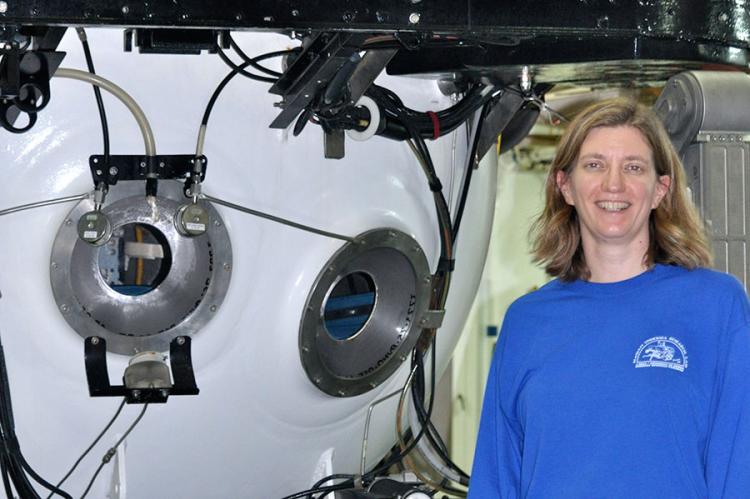Deep-sea reefs found in inhospitable North Pacific
During a survey, scientists discovered deep-sea coral reefs in the Northeast Pacific Ocean, where conditions were considered to be inhospitable for their survival.
Deep-sea scleractinian reefs can be found in places like the North Atlantic and South Pacific, but this is not the case for the North Pacific. This is because in the latter, levels of the mineral aragonite, which coral polyps use to develop their skeletons, are low. What's more, the carbonate dissolution rates in the North Pacific are higher than those of the North Atlantic.
Despite these factors, Professor Amy Baco-Taylor, an Associate Professor of Earth, Ocean and Atmospheric Science at Florida State University, found a chain of reefs during an autonomous underwater vehicle survey through the seamounts of the Northwestern Hawaiian Islands.
"I've been exploring the deep-sea around the Hawaiian Archipelago since 1998, and I'd seen enough to know that the presence of these reefs at these depths was definitely unexpected," said Professor Baco-Taylor.
“Even if the corals could overcome low aragonite saturation and build up robust skeletons, there are areas on the reefs that are just exposed skeleton, and those should be dissolving. Even if the species could survive in the area, we shouldn't be finding an accumulation of reef,” she added.
In a paper published in the Scientific Reports journal, Professor Baco-Taylor, in collaboration with a team from Texas A&M University, reefs proposed two possible reasons for the reef's success: Higher concentrations of chlorophyll in the areas of pronounced reef growth suggests that an abundance of food may provide the excess energy required for calcification, as well as suitable current velocities.
However, neither of the reasons would explain the unusual depth distributions of the reefs, which get shallower as they progress to the northwest along the seamounts.
“These results show that the effect of ocean acidification on deep-water corals may not be as severe as predicted. What accounts for the resilience of these corals on seamounts in the Pacific remains to be determined,” said David Garrison, a program director in the National Science Foundation's Division of Ocean Sciences, which funded the research.
If there are more of such reefs amongst the Northwestern Hawaiian seamounts, Professor Baco-Taylor wants to find them, as further study may unearth more information about how they are able to survive in conditions of raising carbon dioxide and ocean acidification.





























